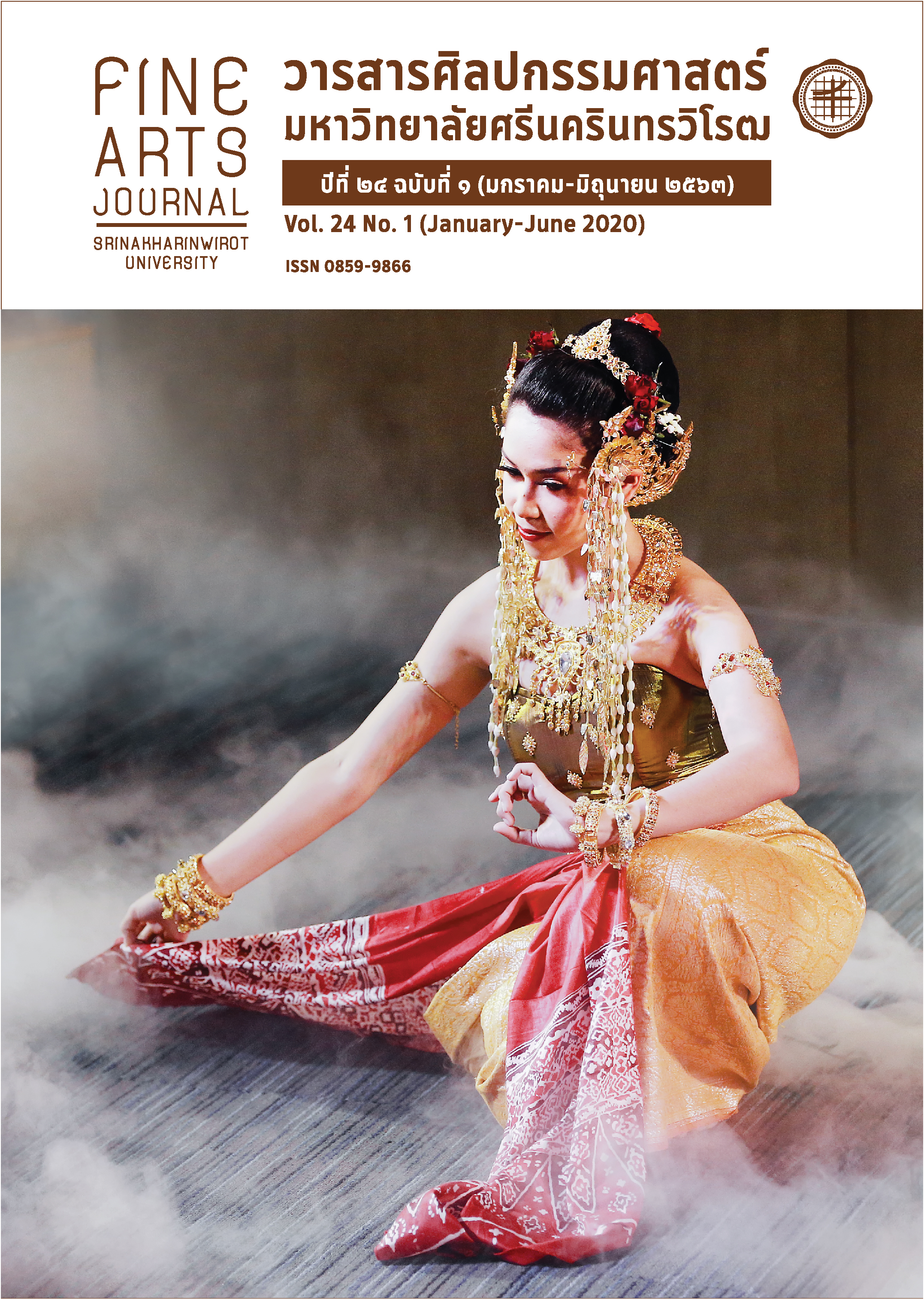PAS DE DEUX: THE ART OF BALLET CHOREOGRAPHY
Keywords:
Pas de Deux, Choreography, Dance, BalletAbstract
The Art of Pas de Deux is a duet dance performed by two dancers, typically male and female dancers, to demonstrate their dance partnering skills with harmony and synchronization. The dance techniques represent the Artistic of Pas de Deux, a choreography of ballet, balancing, communication, interpretation and emotional story through active body movements. The three main elements which allow audiences to realize the aesthetic of Pas de Deux are the beauty of postures, the beauty in musicality and the beauty in drama.
The Art of Pas de Deux is presented to audiences in a variety of ways, including the postures to show the potential of two dancers, the postures to arouse audiences’ emotional senses, and the communication of symbolic and abstract meanings. According to the historical study, Pas de Deux was first introduced in the Middle Ages era and has been developed until the 20th century. Most of Pas de Deux styles being presented in the present day are the intellectuals of the choreographers who have tried to educate themselves by researching, investigating, finding experiences in order to discover new approaches and create an innovation of their own individual Pas de Deux styles. In my point of view, the art of Pas de Deux is considered as one of significant performances of ballet steps which cannot be perfectly performed by a single dancer. The performance required a couple of dancers to express the synchronization in the performance. This means both dancers should have trained very hard together in order to be united, trust each other, and be able to express their emotion to audiences through their artistic movements in accordance with the three aesthetic components of Pas de Deux. The readers of this article will be inspired and motivated to apply the knowledge to develop the arts of choreography and performance based on Pas de Deux. The development might be applied to create the new knowledge of the arts of dramatic dance in the 21st century.
Downloads
References
ณรุทธ์ สุทธจิตต์. (2554). สังคีตนิยม ความซาบซึ้งในดนตรีตะวันตก (พิมพ์ครั้งที่ 8). กรุงเทพมหานคร: สํานักพิมพ์แห่งจุฬาลงกรณ์มหาวิทยาลัย.
นราพงษ์ จรัสศรี. (2548). ประวัตินาฏยศิลป์ตะวันตก. กรุงเทพมหานคร: สํานักพิมพ์แห่งจุฬาลงกรณ์มหาวิทยาลัย.
Au, S. (1988). Ballet & modern dance. London: Thames and Hudson.
Austin, R. (1975). Image of the dance. UK: Vision Press Limited.
Beaumont, R. (2013). The damning to the indecipherable, a look at Balanchineisms. Retrieved November 29, 2019, from http://www.roh.org.uk/news/i-am-a-cloud-in-trousers-the-sayings-of-george-balanchine.
Cohen, S. J. (2004). International encyclopedia of dance. New York: Oxford University Press.
Foster, L. S. (1992). Dancing bodies in incorporations. New York: Zone Book.
Greskovic, R. (2005). Ballet 101: A complete guide to learning and loving the ballet. USA: Limelight Editions.
Kassing, G. (2007). History of dance: An interactive arts approach. US: Human Kinetics.
Kirtstein, L. (1998). The classic ballet: Basic technique and terminology/historical development. New York: Knopf.
Kronenberg, C.J., & Guerra, M.C. (2016). Experiencing the art of pas de deux. Florida: University Press of Florida.
Scholl, T. (1994). From Petipa to Balanchine: Classical revival and the modernization of ballet. New York: Routledge.
Thomas, A., & Davies, H. (1987). Ballet: An Usborne guide dance guides series. UK: Usborne Pub Ltd.
Thomas R. (2015). Romeo and Juliet dance highlight: The Balcony pas de deux. Retrieved March 29, 2020, from https://www.roh.org.uk/news/romeo-and-juliet- dance-highlight-the-balcony-pas-de-deux.US News and World
Report 1972. (2011). George Balanchine. Retrieved November 29, 2019, fromhttps://www.nycballet.com/Explore/Our-History/George-Balanchine.aspx.






